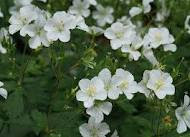Petty spurge is a very common weed in Britain and the rest of Europe . It has spread through introduction to most areas of the world, including North America and Australia . I know this plant by another name, milkweed, which is given to it because of its milky sap or latex which exudes from the stem when it is broken.
It is a member of the Euphorbiaceae or spurge family which makes it a relation of poinsettia, the Candlenut tree, jamalgota (Croton tiglium), the castor bean tree, yucca, and both French and Dog’s mercury.
In the past the milky latex was used to get rid of warts, and callouses, but it should be used with care as it can cause dermatitis, as it is an irritant. The seeds and powdered roots were used as mild laxatives, in similar ways that other members of the family have been employed, for example the castor bean tree from which castor oil is produced.
If you use the latex for any reason, you should wash you hands thoroughly afterwards, and should not touch your eyes, as the latex may cause blindness (rather like that of aak).
Nicholas Culpeper had this to say of the little plant: -
“It flowers in June. The root is used, and of that the bark only.
Virtues. It is a strong cathartic, working violently by vomit and stool, but is very offensive to the stomach and bowels by reason of its sharp corrosive quality, and therefore ought to be used with caution.”
What he didn’t know was that this plant may be very useful in curing lesions caused by skin cancer.
On 25th January 2011 , the BBC reporter, Michelle Roberts in the article “Common weed petty spurge 'could treat' skin cancer” reports a trial that was then in the stage II phase. Thirty-six patients with non-melanoma skin cancer with a total of 48 lesions between them were treated with petty spurge extracts. After one month, 41 of the 48 lesions had disappeared and did not show evidence for their existence in medical examinations. It was a small study and ongoing as patients had to be monitored in case the cancer re-occurred. However it seems that this common little weed may have far more uses than could have been imagined in Culpeper’s day.
It is thought that the active principle in the fight against skin cancer is Ingenol-3-angelate, which activates the protein, Kinase C, which is believed to be effective in treating cancer, particularly leukaemia. (There has been a study carried out on lab mice which suggests this.)
Clearly more research is needed to discover exactly what the mechanism is that causes the plant to eradicate cancerous lesions on the skin.





















































